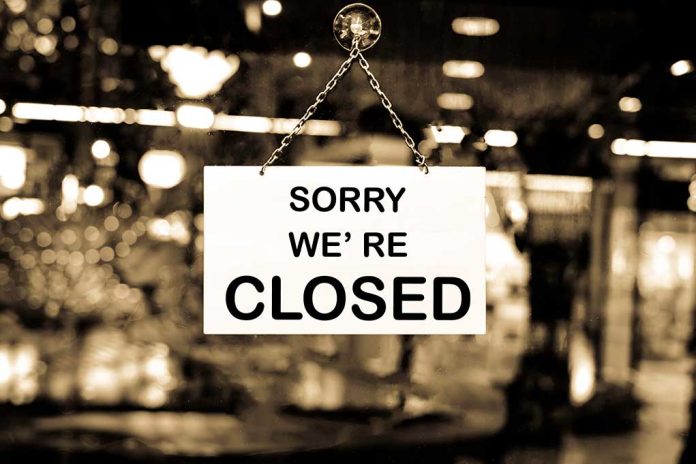
Dear readers, it looks like the pharmacy chain that’s been filling our prescriptions and selling us overpriced greeting cards is in a bit of a pickle. Rite Aid, once a cornerstone of American communities, is now shuttering stores faster than you can say “take two and call me in the morning.” But before we dive into the nitty-gritty, let’s remember why this matters: access to healthcare is no laughing matter, especially when it comes to our rural and underserved areas. So, buckle up, patriots, as we explore how the opioid crisis and financial mismanagement have led to this prescription for disaster.
The Fall of a Pharmacy Giant
Rite Aid, the third-largest drugstore chain in the United States, has closed a staggering 694 stores since filing for bankruptcy in October 2023. This represents a whopping 34% of the 2,063 stores they operated at the time of filing. The latest closures have hit Michigan and Ohio particularly hard, with 27 and 13 stores closing, respectively. These two states have seen 75% and 74% of their Rite Aid locations disappear, leaving just 58 stores in Michigan and 48 in Ohio.
The Opioid Crisis Connection
The company’s downfall isn’t just about poor sales and tough competition from retail giants like CVS and Walgreens. Rite Aid’s involvement in the opioid crisis has led to significant legal troubles and financial burdens. The pharmacy chain faces substantial debt and legal settlements due to their role in the crisis, which has contributed heavily to their current predicament.
Impact on Healthcare Access
These closures aren’t just inconvenient; they’re potentially dangerous. Pharmacy deserts, areas where access to prescription medications is limited, affect 4.7 percent of the U.S. population. For many Americans, especially those in rural or underserved areas, the local Rite Aid was their lifeline to essential medications and healthcare services.
“This is the third time I’ve had to move all my [prescription] information. This one [local store] doesn’t have everything; I get my prescriptions filled at two stores. I have to have the medications I have to have. I don’t know what I’m going to do.” – Cora Petrosky
Financial Pressures and Industry Challenges
Beyond the opioid crisis, Rite Aid faces other financial pressures. Cuts to Medicare and Medicaid reimbursements have squeezed profit margins. Additionally, Pharmacy Benefit Managers (PBMs) wield significant influence over drug pricing and reimbursements, further complicating the financial landscape for pharmacies like Rite Aid.
As Rite Aid continues to navigate these turbulent waters, the impact on communities across America is undeniable. The closure of nearly 700 stores isn’t just a business statistic; it’s a healthcare crisis in the making. While the company struggles to reorganize and stay afloat, patients are left scrambling to find new pharmacies and maintain continuity of care. The Rite Aid saga serves as a stark reminder of the complex interplay between healthcare, business, and public policy in America.
Sources:
https://finance.yahoo.com/news/rite-aid-store-closures-top-152350071.html
https://www.wsws.org/en/articles/2024/07/30/wclm-j30.html

















